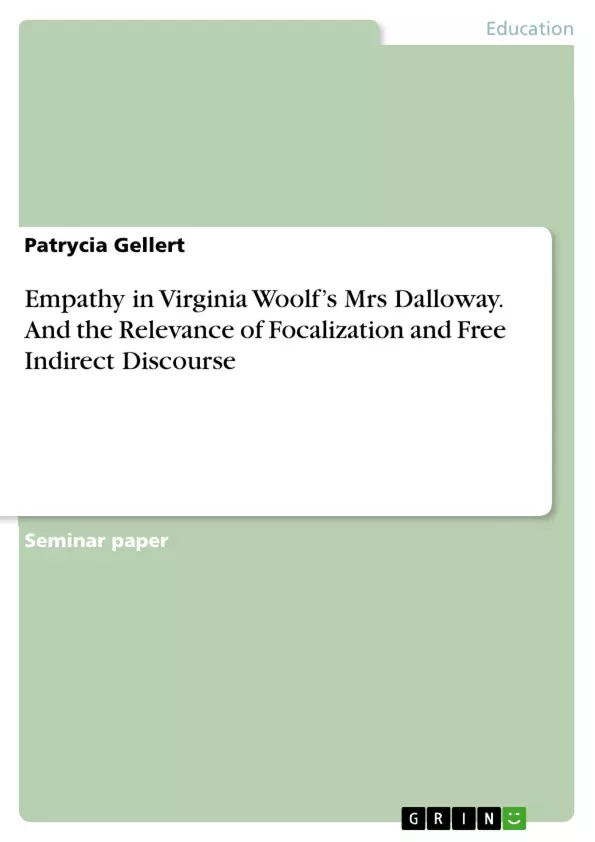By immersing in a narrative, the readers’ empathic imagination is encouraged, which leads to the process of accompanying characters or the narrator throughout the plot and seeing things from their perspectives, including any issue-influencing circumstances or occurrences whatsoever. Theories of art reception claim that people, readers and even cinema visitors, perceive and experience fiction ‘through’ the characters themselves, which, as a consequence, makes people relate to them and sympathetically take part in their experiences and actions. Literary fiction, therefore, can serve as an experiment, by which the reader either generates propinquity or distance towards certain characters or events. Different literary techniques prompt the reader to make cognitive conclusions and thereby train their cognitive abilities and the theory of mind. According to Vera Nünning, reading fiction, hence, enables people to “[…] simulate the thoughts and feelings of others […]” and elicits spontaneous perspective-taking, meaning that reading spurs the readers to take the point of view of certain characters or the narrator. This goes along with the necessity of understanding the characters’ or narrator’s motivations, thoughts and emotions in order to make sense of the story as a whole. In literary fiction, this process is implemented by various narrative techniques which either support or inhibit the readers’ empathic sharing. Referring to Nünning, the three strategies which support perspective-taking are focalization, engrossing comments by an overt, heterodiegetic narrator and the generation of suspense by, for example, exposing characters to dangerous situations. Focalization, above all, guides the readers’ fictional experience on an elementary level, enables the reader to fully take over the perspective of one or more characters and to “[…] simulate their thoughts and feelings […]”.
The strategy which the analytical part of this essay is based on is the former. With the aim to confirm the proposition that internal focalization, more specifically, free indirect discourse in Virginia Woolf’s Mrs Dalloway, triggers empathy on the part of the reader, three exemplary passages of Mrs Dalloway will be analyzed and examined regarding empathy/ perspective-taking. Prior to the analytical part, definitions of empathy as opposed to sympathy and emotional contagion, focalization and free indirect discourse will be provided.
Inhaltsverzeichnis (Table of Contents)
- Introduction
- Theoretical Framework
- What is Empathy? - A Differentiation
- Triggering Empathy - The Relevance of Focalization and Free Indirect Discourse
- Focalization
- Free Indirect Discourse
- The Effect of Internal Focalization and Free Indirect Discourse on Empathy
- Analysis: Triggered Empathy in Virginia Woolf's Mrs Dalloway
- Historical Context
- Analysis Passage 1: Septimus Warren Smith
- Analysis Passage 2: Clarissa Dalloway
- Analysis Passage 3: Peter Walsh
- Conclusion
Zielsetzung und Themenschwerpunkte (Objectives and Key Themes)
This essay explores the ability of literary fiction to arouse readers' empathy, focusing on the novel "Mrs Dalloway" by Virginia Woolf. The analysis focuses on how internal focalization, specifically free indirect discourse, triggers empathy in the reader.
- Empathy as a key element of literary fiction and its role in engaging readers.
- The interplay of focalization and free indirect discourse in evoking empathy.
- The impact of internal focalization on the reader's perception of characters.
- The historical context of Virginia Woolf's "Mrs Dalloway" and its relevance to the themes explored.
- Analyzing specific passages in "Mrs Dalloway" to demonstrate the effectiveness of free indirect discourse in triggering empathy.
Zusammenfassung der Kapitel (Chapter Summaries)
The introduction establishes the connection between literary fiction and readers' empathy, emphasizing the role of narrative techniques in shaping the reader's experience. It highlights focalization as a key strategy for guiding the reader's perspective and simulating the thoughts and feelings of characters.
The theoretical framework chapter provides definitions of empathy, distinguishing it from sympathy and emotional contagion. It further examines the significance of internal focalization and free indirect discourse in promoting empathy, setting the stage for the analysis of "Mrs Dalloway."
The analysis chapter delves into the historical context of "Mrs Dalloway" and then examines specific passages, focusing on the characters of Septimus Warren Smith, Clarissa Dalloway, and Peter Walsh. Each passage is analyzed in terms of how free indirect discourse contributes to the reader's empathic engagement with the characters.
Schlüsselwörter (Keywords)
The primary keywords and focus topics of this essay include: empathy, sympathy, emotional contagion, focalization, free indirect discourse, internal focalization, Virginia Woolf, Mrs Dalloway, literary fiction, narrative techniques, character analysis, historical context, perspective-taking.
- Quote paper
- Patrycia Gellert (Author), 2016, Empathy in Virginia Woolf’s Mrs Dalloway. And the Relevance of Focalization and Free Indirect Discourse, Munich, GRIN Verlag, https://www.grin.com/document/428967



